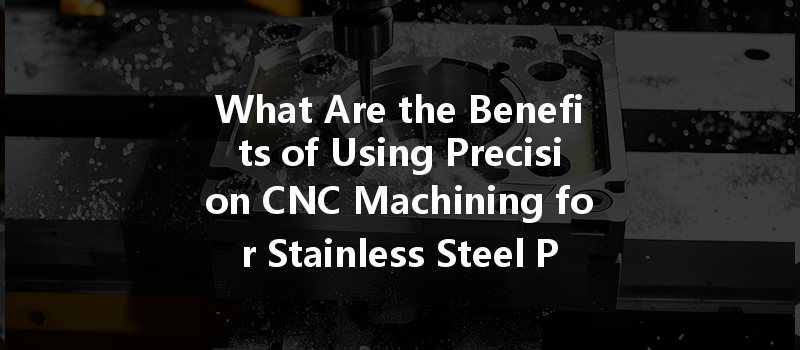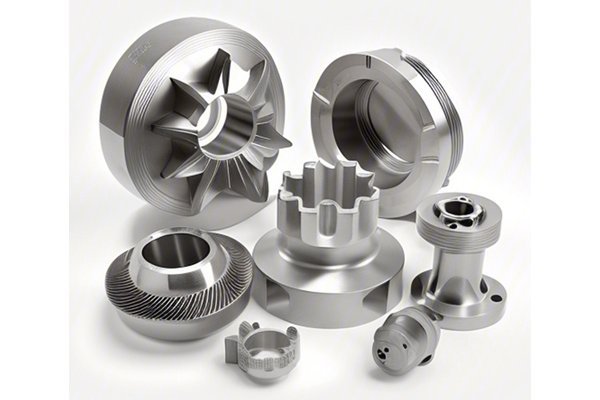Did you know that stainless steel is one of the most widely used materials in the world, accounting for roughly 25 million tons of production annually? Its remarkable strength and corrosion resistance make it an ideal choice for a plethora of industries, including automotive, aerospace, medical, and construction. However, the effectiveness of stainless steel in these applications heavily relies on the precision with which it is machined. In this blog, we will explore the myriad benefits of using precision CNC (Computer Numerical Control) machining for stainless steel parts, delve into its technological intricacies, and discover how it can enhance production efficiency and product quality.
The Basics of CNC Machining
To understand the advantages of precision CNC machining for stainless steel, it’s essential first to grasp what the process entails. CNC machining involves the use of computer-controlled machine tools to create high-precision parts based on a digital design—often generated using CAD (Computer-Aided Design) software. CNC machines come in various types, including CNC milling machines, CNC lathes, and CNC routers, each tailored for specific machining tasks.
Precision CNC machining boasts several key features:
Why Use Stainless Steel?
Before diving deeper into the machining process, it’s prudent to discuss why stainless steel is often the material of choice in precision engineering.
Given its advantages, the ability to precisely machine stainless steel into specific forms is essential for maximizing its usefulness.
The Benefits of Precision CNC Machining for Stainless Steel Parts
One of the most paramount benefits of CNC machining is its ability to deliver high-precision parts consistently. In industries such as aerospace or medical devices, even the slightest deviation can result in catastrophic failures. CNC machines are programmed to adhere strictly to specified tolerances, which drastically reduces the potential for human error inherent in manual machining processes.
Modern engineering often calls for intricate designs that would be nearly impossible to produce manually. CNC machining can easily create complex geometries, including curves, holes, and forms that traditional machining cannot. For instance, creating a part with multiple angles or internal features is a breeze with CNC technology, ensuring that components are manufactured to precisely meet their design specifications.
CNC machines operate in an automated manner and can run continuously without breaks, which vastly improves efficiency. Parts can be produced with high speed, significantly cutting down the time required for both setup and production. With CNC machining, the time required to change tools and set up configurations is also minimized, creating a leaner and more efficient manufacturing workflow.
CNC machines are programmed with a keen understanding of material use, which helps to minimize waste. Because the design can be meticulously optimized in software before any cutting begins, less raw material is wasted in the process. This is particularly important when manufacturing parts from expensive stainless steel stock.

While the initial investment in CNC machinery can be high, the long-term savings can be substantial. The combination of enhanced productivity, reduced material waste, and lower labor costs often translates to a higher return on investment. For manufacturers focused on high volume and high precision, CNC machining proves to be an economically advantageous solution.
Another significant benefit of CNC machining is its flexibility. With rapid advancements in technology, specifically in software, CNC machines can be quickly reprogrammed to accommodate new designs or modifications. This is particularly beneficial for industries where design specifications frequently change. As customer demands evolve, the ability to adapt to these changes quickly is invaluable.
CNC machining is a fantastic option for prototyping, allowing engineers to create precise models for testing and evaluation quickly. With CNC capabilities, they can iterate designs based on functional testing or feedback received, refining the product efficiently before mass production.
CNC machining can produce high-quality finishes on stainless steel components, which is essential for both aesthetic and functional purposes. A well-finished surface can reduce corrosion, improve performance, and provide a more appealing product design. Moreover, advanced CNC techniques allow for post-machining processes like polishing and coating to further enhance the quality and longevity of parts.
CNC machining is often part of a larger manufacturing ecosystem that includes processes such as welding, assembly, and quality assurance. By integrating CNC machines into this broader framework, manufacturers can create streamlined processes that enhance overall production efficiency and ensure product quality.
With modern technology, many CNC machines are outfitted with real-time monitoring systems that can detect deviations from specified parameters during the machining process. This ability allows for immediate corrective actions to be taken, ensuring that quality standards are consistently met.
Implementing Precision CNC Machining in Your Operations
If you’re considering incorporating precision CNC machining for stainless steel parts into your operations, here are a few steps to guide you:
Precision CNC machining has cemented itself as a cornerstone of modern manufacturing, especially when it comes to stainless steel parts. With its unparalleled accuracy, efficiency, and versatility, CNC technology is redefining how industries approach part production.
By investing in CNC machinery, businesses not only increase their production capabilities but also improve product quality and reduce waste. As stainless steel continues to be a preferred material across various sectors, mastering the art of CNC machining will be an integral factor in retaining a competitive edge.
In conclusion, as you contemplate the future of your manufacturing processes, consider the significant advantages that precision CNC machining can bring. It not only supports the optimization of resources but also fosters innovation through its adaptability. Now is the time to embrace this technology and position your business for success in the evolving landscape of industrial manufacturing.






